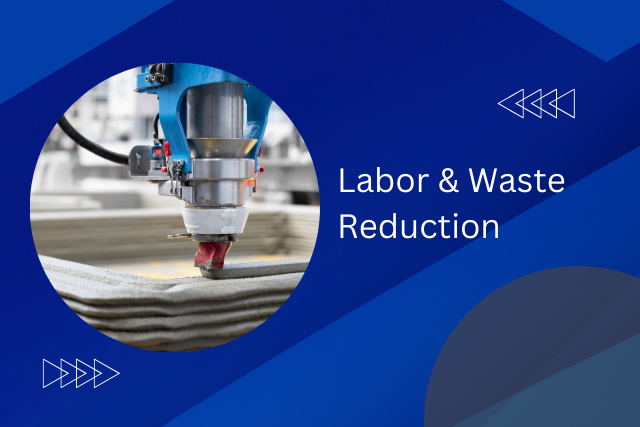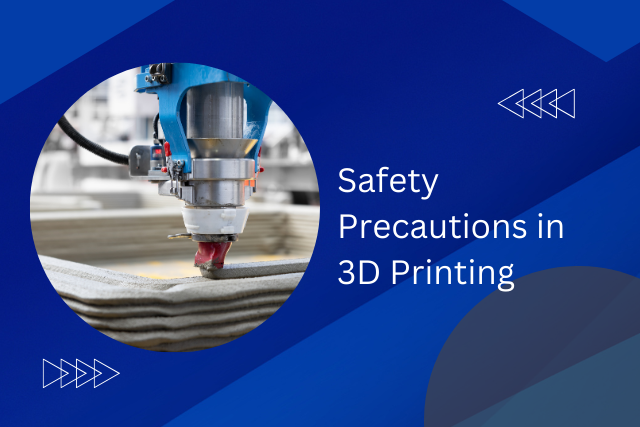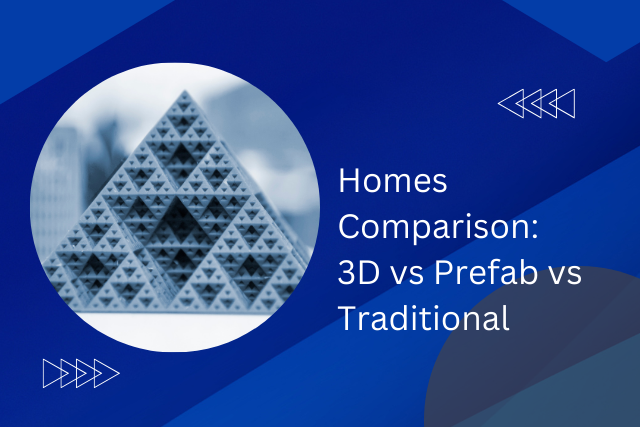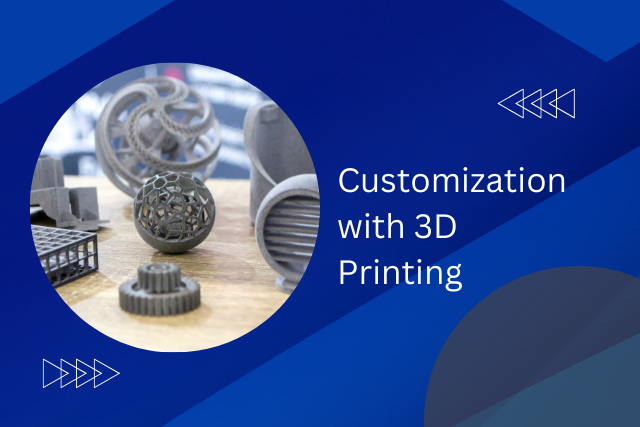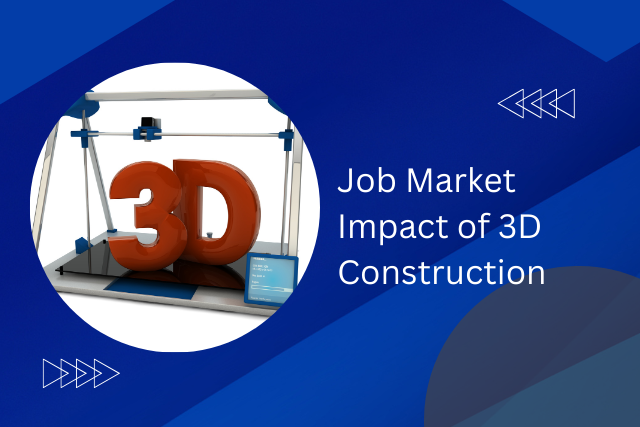In today’s building world, modular design is becoming essential, especially for 3D-printed and prefab homes. This method means building in separate pieces or modules that can be easily swapped or changed. It has many good points, such as making the building process quicker and less harmful to the environment.
Using modular design, building houses can be cheaper and more flexible to people’s needs. So, when we think about how this method changes the way we build homes today and what it means for the future, it’s clear that modular design is making a big difference.
The Essence of Modular Design
Using modular design is a new way to build 3D and prefab homes. It focuses on being fast, flexible, and good for the planet. This method is changing how we think about making houses, allowing people to have homes that can change as their needs do. With modular design, parts of the house are made in a particular place, which means better quality, less waste, and more imaginative use of materials.
The main point of modular design is to make building houses quicker. It lets us put homes together fast at the site, making the whole process much shorter than in the old ways. This not only makes work more efficient but also reduces harm to the environment.
Also, the easy-to-change nature of modular design gives homeowners the chance to change their homes easily as their lives change, without the limits of old-style buildings.
In short, modular design is an innovative, new way that fits with how we want to live today – quickly, without harming the planet, and with the ability to change.
Benefits of 3D Printed Homes
Transitioning to the advantages offered by 3D-printed homes, it is essential to highlight the pivotal roles of cost-efficiency improvements and enhanced design flexibility. These aspects significantly contribute to making housing more accessible while concurrently expanding architectural possibilities.
Cost Efficiency Improvements
Using 3D printing technology in building houses can save a lot of money and make building quicker, cheaper, and better for the planet. 3D printing makes building simpler because it skips many of the complex and slow steps that are usually needed. This tech places building materials very carefully, so almost nothing is wasted.
Using materials wisely means spending less money and being kinder to the environment because there’s less trash from buildings. Also, making parts suitable where the house is being built or very close means spending less money on moving stuff around.
This new way of building is excellent for people who are making houses and those who want to buy them. It means we can do more with less, which is good for both our wallets and the Earth.
Enhanced Design Flexibility
One of the best things about 3D-printed homes is how they let builders and owners get really creative with how houses look and work. You can make super unique and valuable designs much easier than before. This means houses not only look great but can also fit precisely what different people want and need.
| Feature | Benefit |
|---|---|
| Customizability | Make spaces just right for you |
| Complex Designs | Bring detailed building ideas to life |
| Rapid Prototyping | Quickly make and tweak designs |
| Sustainability | Use green materials and ways of building |
This new way of making homes shows a future where houses really show off who lives there, giving everyone a chance to express themselves freely.
Advantages of Prefab Construction
Transitioning to the realm of prefab construction, it is imperative to analyze its inherent advantages, particularly in the domains of cost efficiency and speed of assembly.
These prefabricated structures offer a streamlined manufacturing process that significantly reduces material waste and labour costs, thereby enhancing overall economic feasibility.
Moreover, the ability to construct components in a controlled environment and assemble them onsite leads to expedited project timelines, presenting a practical solution to the pressing demands of modern construction schedules.
Cost Efficiency Benefits
Building houses with prefabricated (or prefab) parts is a smart way to save money. This method makes the building process quicker and cheaper because it uses less work and materials.
Making parts in a factory and prefab homes cuts down on waste and uses materials better, which means building these homes costs less.
This is great for people building homes or companies because they can know how much they will spend and not go over budget. Also, because prefab homes are made from parts put together on-site, there isn’t as much need for highly skilled workers, which saves even more money without losing quality.
This cost-saving way helps more people afford homes and lets them have excellent, sustainable homes without spending a lot of money.
Choosing prefab homes is a smart move for getting good, affordable housing that fits how we live today.
Speed of Assembly
One big plus of prefab construction is how quickly everything gets put together. This method uses parts made ahead of time in a different place. These parts are then brought to where the house will be built and put together.
This way of building can cut down on the time it takes to make a house ready. It avoids many common delays seen in usual building ways, like bad weather or problems with schedules of other workers.
Prefab construction makes getting a new home faster and less of a hassle. This means people can get their dream homes quicker and with less trouble.
Environmental Impact Reduction
Building in a modular way really helps the environment because it cuts down on waste and uses resources better. This smart way of building is good for keeping our planet healthy.
This method makes sure we only use what we need and don’t throw away a lot of materials. This is good because it saves necessary materials and makes less trash, which helps keep the Earth cleaner.
This kind of building also uses less energy. Since the parts are made ahead of time, we need fewer machines and spend less time building on the site, which means we create less pollution. Modular construction also makes it easier to use green materials and energy-saving technologies, making it even better for the planet.
For people who like new ideas and want to make sure we use our resources wisely, modular building is a great choice.
It shows we care about taking care of the Earth and can make buildings that meet new standards for being green without giving up on quality or the ability to change designs. This way of building is an intelligent answer to today’s building challenges.
Cost Efficiency Breakdown
Understanding how modular and 3D prefabricated homes save money shows they are cheaper than traditional building methods. The savings come from a few critical areas in the modular and prefabricated building process.
For one, building in a controlled environment means fewer delays and damage from bad weather, which leads to lower insurance costs and less wasted materials.
This setting also makes it easier to stick to a budget because it cuts down on surprise costs that often happen in regular construction projects.
Also, making modular parts in large quantities lowers the cost for each unit. This cost reduction gets even better because of the efficient design and manufacturing process, which uses advanced software to use materials wisely and cut down on waste.
The outcome is a cheaper overall project cost, making modular and 3D prefabricated homes a good option for people who want to save money without giving up quality or design.
In short, the money-saving aspect of modular and 3D prefabricated homes not only makes owning a home possible for more people but also meets the goals of saving money and living in a way that’s good for the planet.
Streamlining the Building Process
Making the building process easier, modular and 3D prefabricated homes cut down on the time it takes to build houses by using precise machines to make parts. This new way uses technology to make house pieces in a factory where things are more predictable.
This is different from building houses the old way, where bad weather and people making mistakes can cause delays. With modular and 3D prefab homes, everything is made to be efficient and consistent, making sure that every part of the house is made well before it even gets to where the house will be built.
Using advanced computer programs, architects and engineers can design houses very accurately, making the building process even faster. These programs help use materials better and reduce waste, which is good for the environment.
Being able to plan and build houses so precisely makes the whole process quicker, meaning people can move into their new homes faster. This is great because it meets people’s need for housing quickly and gives them more control over where they live, without the usual waiting and problems of old-fashioned building methods.
Customization and Flexibility
3D and prefab modular homes make building houses easier and let people choose their designs to fit what they want. These homes can be changed easily to suit different needs, like if a family gets bigger or someone wants a new look for their house.
This means that every house can be unique for the person living in it, showing off what they like and how they live. Adding rooms or changing parts of the house is easy with this type of design.
Using software when making the house lets people see and change their home plans by themselves. They can pick different styles, materials, and colours and see how it looks right away. This helps them make choices that they are happy with and that fit their budget. Being part of designing their home makes it more unique and personal to them.
Modular homes are not only about looking good. They are also built to use less energy and make living comfortable.
Future Trends in Home Building
Looking into what the future of building homes might be like, we see a significant move towards being more green, using innovative technology, and making the building process more efficient.
Modular design is becoming popular because it fits well with these new trends. It offers easy ways to customize homes while keeping things sustainable.
| Trend | Description | Impact |
|---|---|---|
| Sustainability | Using green materials and designs that save energy. | Makes homes less harmful to the planet, saves money on bills. |
| Smart Tech Integration | Adding devices connected to the internet to make life easier. | Makes living more convenient, safe, and can save energy. |
| Modular & Prefab | Building parts of homes in advance to speed up construction. | Cuts down time needed to build, improves quality. |
| 3D Printing | Creating parts of buildings with a 3D printer for unique designs. | Allows for new kinds of buildings, cuts down on waste. |
These changes are leading to homes that are better for the environment, more efficient, and give people more choice in how they want to live. As these trends grow, they’ll change how homes are built, making the process more flexible, durable, and eco-friendly.
Conclusion
To sum it up, modular design is essential in today’s home building, especially for 3D printed and prefab homes. This approach helps save money and is better for the environment.
It also makes building homes faster and lets people choose how they want their homes to look and function. As we move forward, modular design will be a big deal in making new and better ways to build houses, combining innovative ideas, practical solutions, and new technology.


